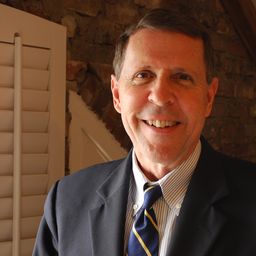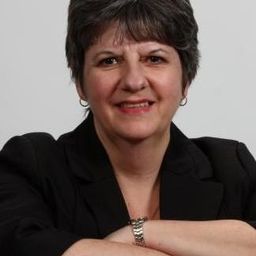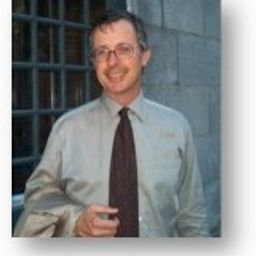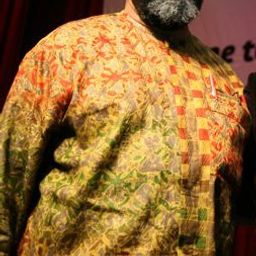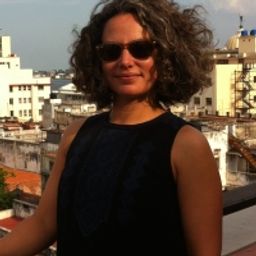
Working experience
2008-Present Cultural Consultant, Chiang Mai, Thailand
\- Historic Structure Report in cooperation with Chiang Mai University Faculty of
Architecture, Prince Mahidol Museum Project, Chiang Mai, Thailand
\- Structural services to Mae Fah Luang Art and Cultural Park, Mae Fah Luang
Foundation, Under Royal Patronage, Chiang Rai, Thailand
\- Structural services to Wat Phra Kaew Museum, Chiang Rai, Thailand
2002-2008 Curator, Rai Mae Fah Luang, Mae Fah Luang Foundation, Chiang Rai, Thailand
1998-2000 Assistant director, Rai Mae Fah Luang, Mae Fah Luang Foundation Chiang Rai, Thailand
Education
1976 Anthropology, Pomona College, Claremont, California
2001- Master Museology, Reinwardt Academy, Amsterdam, Netherlands
Background summary
Growing up in Laos I developed an interest in anthropology and material culture. After working with
handicraft cooperatives in Haiti and Thailand, I settled with my husband in Chiang Rai, Thailand in 1983,
founding Golden Triangle Tours, the first touring organization conceived and run by locally born and
raised residents.
In 1993, I established Ahimsa Gallery, the first cultural centre in Chiang Rai featuring exhibitions by local
artists, poetry readings by local writers and lectures on art and culture. While working with village
carpenters building locally inspired architecture, I served as a volunteer docent at Rai Mae Fah Luang,
Later, I supervised the development of the first museum of ethnology in the area, at which I finally
served as a curator.
The challenges of creating a professional institution based in local participation led me to follow a
master course at the Reinwardt Academy, the faculty of museology and heritage of the Amsterdam
University of the Arts. Working as a consultant I research Southeast Asian museology linking it to local
participation.
Links
Mae Fah Luang Art and Cultural Park: masterpieces.asemus.museum/museum/detail.nhn?museumId=1113
www.maefahluang.org/rmfl
asemus.museum/museum/mae-fah-luang-foundation/
Hong Luang Saeng Kaew Museum, Wat Phra Kaew: www.watphrakaew-chiangrai.com/eng/museum.php
Convenor: Informal Northern Thai Group www.intgcm.thehostserver.com/
Publication
Weldon, R., “Transformative Museology”, Cadernos de Sociomuseologia, no. 37 (2010), 75-85
(http://revistas.ulusofona.pt/index.php/cadernosociomuseologia/article/view/1635/1301)
Sessions in which Ms. Rebecca Weldon Sithiwong participates
الثّلاثاء 7 يونيو, 2016
Sessions in which Ms. Rebecca Weldon Sithiwong attends
الجمعة 3 يونيو, 2016
What does heritage change for tourism? | Le patrimoine, ça change quoi au tourisme? Ce débat veut interroger les relations entre le tourisme et le patrimoine et dépasser ainsi les idées reçues sur l'antagonisme entre le tourisme "corrupteur" et le patrimoine qui en serait la victime. Il s'agit donc de repenser le tourisme comme un réel acteur du patrimoine, de sa valorisation et de son appropriation, y compris par les populations locales. Cela présuppose, au p...
Avant de s’appeler le Vieux-Montréal, la vieille ville était le cœur vivant de Montréal habité par l’ensemble de ses classes sociales : riches et pauvres, artisans et hommes politiques, ouvrières et propriétaires fonciers, esclaves et notaires, juges et débardeurs… Le quartier Bonsecours au nord du marché a gardé plus longtemps que tout autre une fonction résidentielle et la présence d’une population de condition modeste. Le circuit explore les commerces, les écoles, les usines, les rues et l...
Welcome addresses and cocktail, followed by the Concordia Signature Event "The Garden of the Grey Nuns". As the opening ceremony and cocktail take place in the former Grey Nuns' Motherhouse, recycled into campus residence and reading rooms by Concordia University, delegates will also have the possibility to discover the video Three Grey Nuns (3 minutes, by Ron Rudin and Phil Lichti. Three Grey Nuns recount their memories of communal life in the Grey Nun’s Motherhouse. Built...
Working with archival documents and the current-day morphology of the Grey Nuns' site, Dr Cynthia Hammond, Dr Shauna Janssen, in collaboration with Dr Jill Didur, will curate a series of installations and performances that speak directly to the rich heritage of a specific urban landscape: the gardens of the Grey Nuns' Motherhouse, now part of the Concordia University downtown campus. Visitors will have the opportunity to explore the lost working gardens of the Grey Nuns. As with other such...
السّبت 4 يونيو, 2016
What if we changed our views on heritage? And if heritage has already changed? While, on the global scene, states maintain their leading role in the mobilization of social and territorial histories, on the local scale, regions, neighbourhoods and parishes have changed. Citizens and communities too: they latch on to heritage to express an unprecedented range of belongings that no law seems to be able to take measures to contain, often to the discontent of...
Since the beginning of the 19th century religious buildings and artefacts of the West have been involved in a continuous process of musealization. In the time-period subsequent to the Second World War, the general forces of secularisation increasingly turned religious buildings, most of them churches, into heritage and substantial parts of Christian practices into history. On a global scale (Western), conservation and heritage practices have been applied on tangible and intangible expressions...
Le patrimoine recouvre des notions et des pratiques, et désigne des objets, dont « [la] perte constitue un sacrifice et [dont la] conservation suppose des sacrifices » (Chastel et Babelon 1980). En amont de ces productions de significations et perceptions sociales, ces notions et les modes de désignation diffèrent selon les univers linguistiques, géographiques, et temporels, alors que, sous la pression d’un ‘algorithme universalisant’ (Merleau-Ponty 1969), un processus de normalisation est...
Most of what we experience as heritage emerges into conscious recognition through a complex mixture of political and ideological filters, including nationalism. In these processes, through a variety of devices (museums, scholarly research, consumer reproduction, etc.), dualistic classifications articulate a powerful hierarchy of value and significance. In particular, the tangible-intangible pair, given legitimacy by such international bodies as UNESCO, reproduces a selective ordering of cul...
الأحد 5 يونيو, 2016
We would like to propose a session, building on the one we ran at the 2014 CHS conference in Canberra, on how emotion and affect feature in the fields of heritage and museums studies, memory studies, public history, heritage tourism, studies of the built and urban environment, conservation, archives and any field of study that deals with the emotional impact and use of the past in the present. There is an increasing interest in how emotion is a form of judgement on things that affect ou...
"What does heritage change?" is a multifaceted question to which the answer(s) are in primary respects related to real-life negotiations among different groups of citizens, cultures, races, ethnic groups, sexual identities, and social classes about received, official and/or widely accepted or accomodated intangible attributes, cultural traditions, historic monuments, buildings, and other transmitted or revived historical legacies. Heritage designated by and for whom, for what motivations, an...
الإثنين 6 يونيو, 2016
The field of heritage has emerged as a key site of reflection. Influenced by shifts in the academy (e.g., post-colonial, post-structural and feminist theories), heritage scholars are bringing increased attention to the deployment of heritage as both a conceptual category and a contested field of power and discourse. Nevertheless, significant challenges remain in communicating what comprises the theoretical and methodological toolkit of heritage studies. Scholars are still mapping out the nuan...
الثّلاثاء 7 يونيو, 2016
To date, there has been much scholarly discussion and critique about how ideas and policies of "heritage" may be operating globally. There have also been ethnographic studies providing "on the ground" perspectives. In this session, we aim to establish a bridge between local-level empirical study and global heritage discourse. By addressing "heritage" in relation to processes of modernization and globalization in East Asia, we seek to investigate the dynamic communication between global herita...
The closing dinner of the conference, called “Pawâ” according to a French-Canadian tradition borrowed from the Native American lexicon, will be an opportunity to discover, in the heart of the Old Port of Montreal, an original culinary creation by the caterer Agnus Dei, from the renowned Maison Cartier-Besson in Montreal, leader in its field for its boundless creativity and event expertise. The dinner, in the form of stations, will offer delegates an exploration of Quebecois culinary heritage,...
الأربعاء 8 يونيو, 2016
More details to come. Bus tour. Tour Guide : Luc Noppen Coût / Fees : 48$ + taxes

